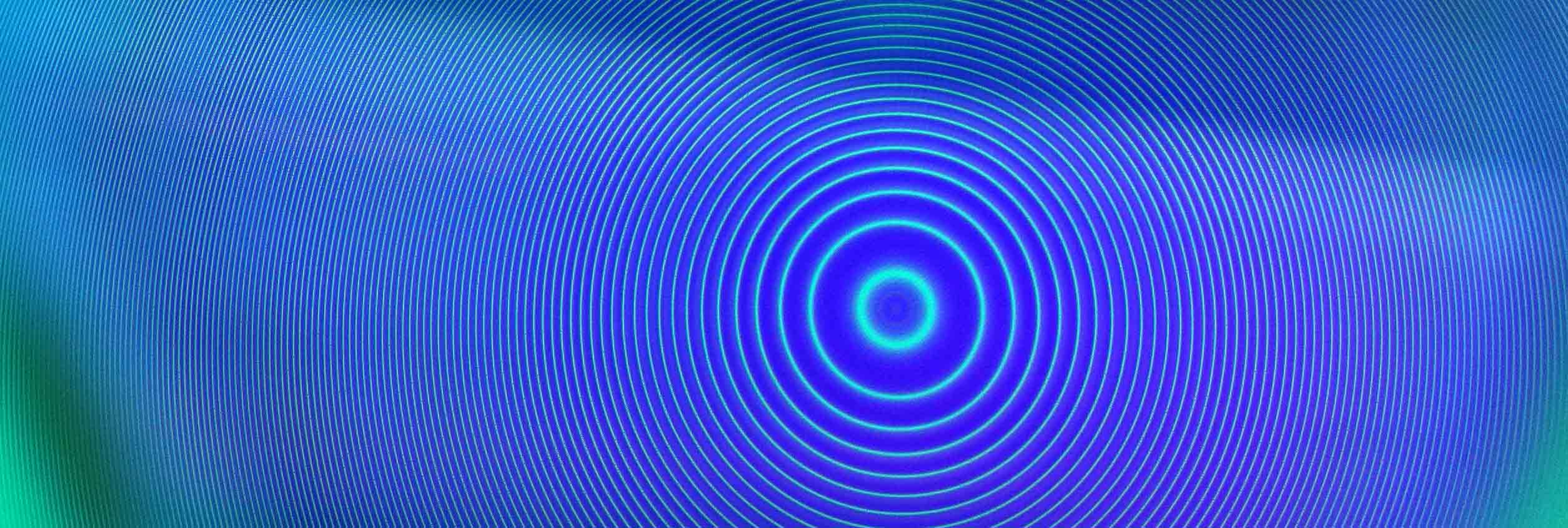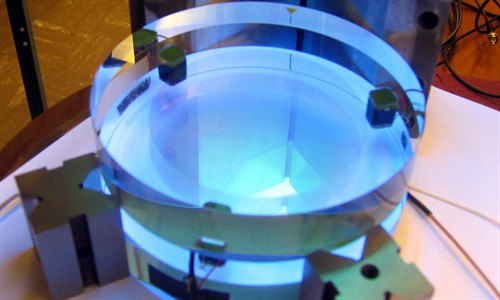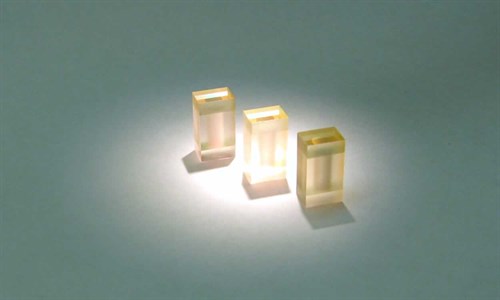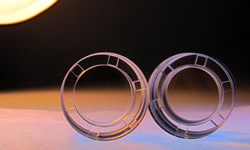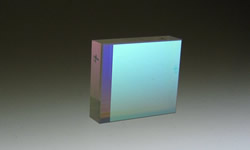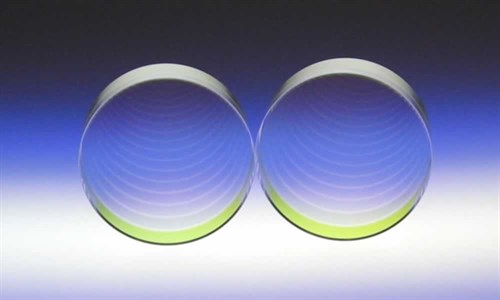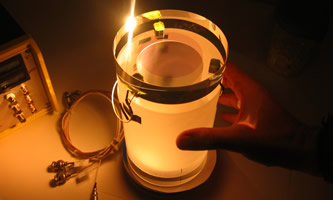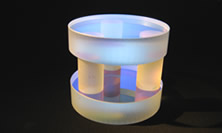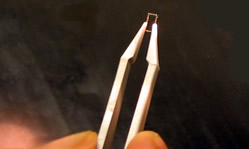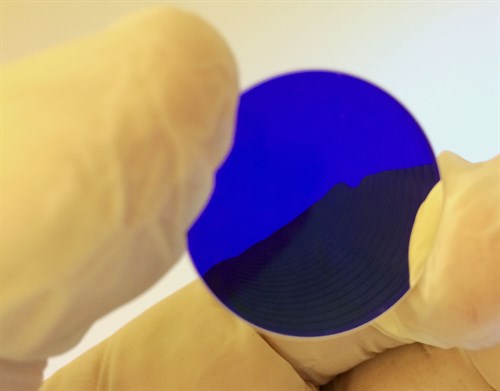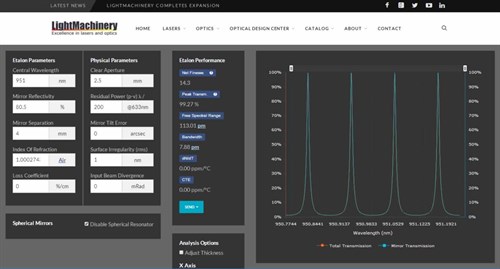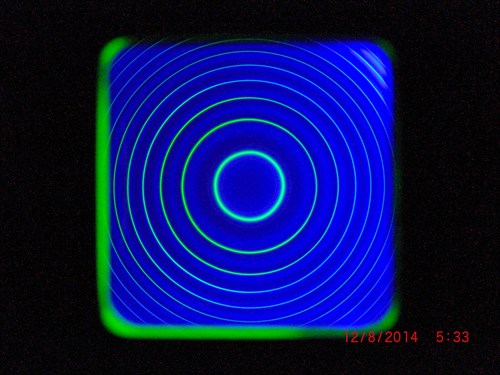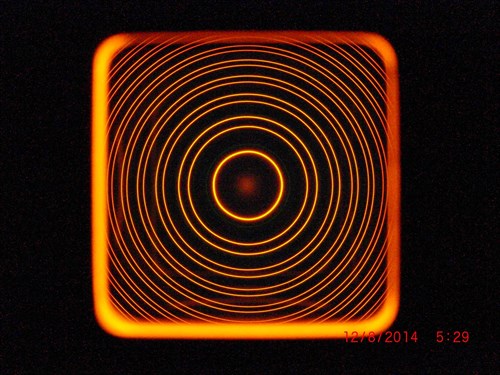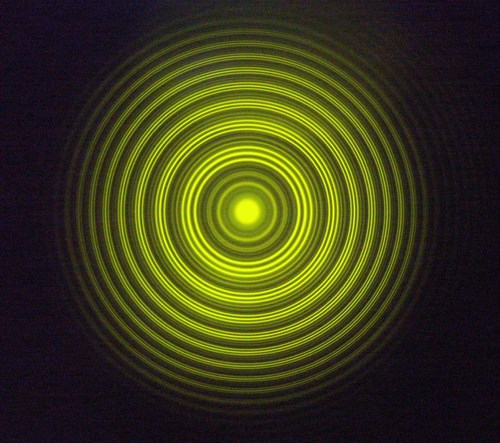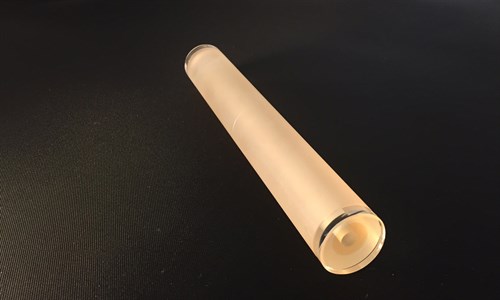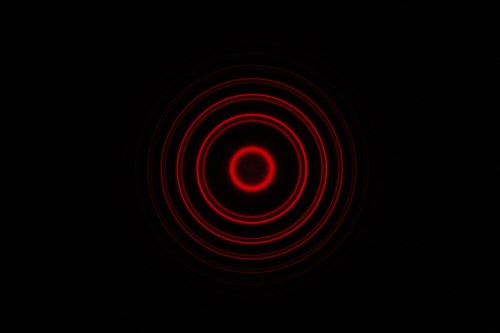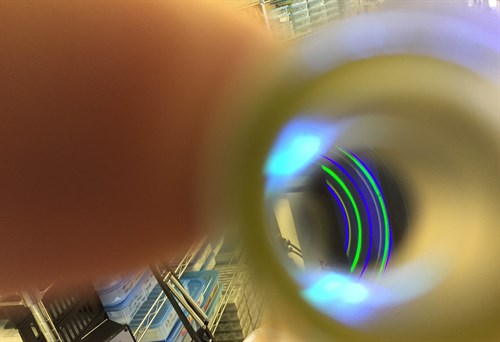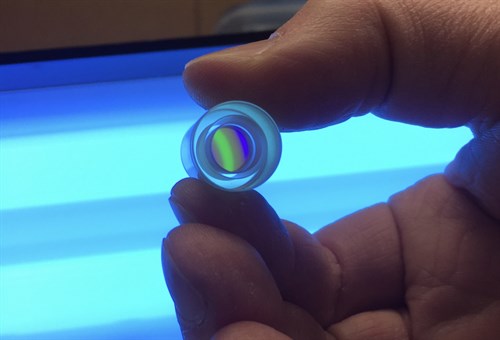LightMachinery manufactures the world's finest solid and air spaced etalons. Our fluid jet polishing systems allow us to routinely create surfaces that are better than lambda/100 peak to valley.
Solid etalons, air spaced etalons, piezo tunable etalons, Gire Tournois etalons, LightMachinery has extensive expertise in the manufacturing and testing of all kinds of Fabry Perot etalons from 1mm square to 100mm in diameter. These devices require high quality, very flat optical surfaces and extreme parallelism to achieve high performance, making them a good match for the polishing and metrology at LightMachinery.
Etalons can be made from a wide variety of materials including; Fused Silica, Silicon and even Air. Use our simple web based etalon calculator to determine the thickness and coating reflectivity to meet your requirements. For a more visual and fun look at the effect of light passing through an etalon over a large angle range try the Fabry Perot Bullseye Tool
Some Background on Fabry Perot Etalons
The Fabry Perot interferometer consists of two parallel flat semi-transparent mirrors separated by a fixed distance. Light that enters the etalon undergoes multiple reflections and the interference of the light emerging from the etalon during each bounce causes a modulation in the transmitted and reflected beams. During one return bounce the phase changes by 2πx2ndCOS(θ)/λ, where θ is the angle of the beam in the etalon. Constructive and destructive interference occurs based on the angle of the beam (θ) the optical thickness of the etalon (nd) and the wavelength(λ).
 The transmission spectrum of an etalon will have a series of peaks, where constructive interference occurs, spaced by the 'free spectral range' or FSR. As seen on the right in our online etalon designer. If the absorption and scattering losses are small, the reflection spectrum of the etalon is 1 - T.
The transmission spectrum of an etalon will have a series of peaks, where constructive interference occurs, spaced by the 'free spectral range' or FSR. As seen on the right in our online etalon designer. If the absorption and scattering losses are small, the reflection spectrum of the etalon is 1 - T.
- FSR = 1/2nd cm-1 (wave number)
- FSR = λ2/2nd nm (wavelength)
- FSR = c/2nd Hz (frequency)
You will notice that the mirror reflectivity is not part of these equations. The mirror reflectivity does not affect the FSR, it affects the number of bounces and improves the quality of the modulation (more perfect bounces = better modulation).  As the reflectivity of the mirrors is increased the modulation peaks become sharper and decrease in width. The full width at half maximum of the peaks is called the bandwidth and the ratio of the line width to the distance between the peaks (the FSR) is called the Finesse, F. So the Bandwidth = FSR / F. And the finesse is the ratio of the FSR to the Bandwdth, F = FSR / Bandwidth.
As the reflectivity of the mirrors is increased the modulation peaks become sharper and decrease in width. The full width at half maximum of the peaks is called the bandwidth and the ratio of the line width to the distance between the peaks (the FSR) is called the Finesse, F. So the Bandwidth = FSR / F. And the finesse is the ratio of the FSR to the Bandwdth, F = FSR / Bandwidth.
- Bandwidth is the full width at half maximum (FWHM) of the peak
- Bandwidth = FSR / F
The finesse is a dimensionless quantity and the units of the Bandwidth are the same as the FSR.
Another quantity, The Coefficient of Finesse, \(F = 4\mathcal{R}/(1 - \mathcal{R})^2\), and the maximum reflectivity of the etalon is \(\mathcal{R}_{max} = 4\mathcal{R}/(1+\mathcal{R})^2\). The Coefficient of Finesse and the finesse are related by the equation \(\mathcal{F}=\pi/(2\arcsin{(1/\sqrt{F})})\) which can be approximated to \(\mathcal{F}=\pi\sqrt{F}/2\) or \(\mathcal{F} = \pi\sqrt{\mathcal{R}} / (1 - \mathcal{R})\).
Actual versus Theoretical Performance
Etalons are usually described in terms of FSR and finesse. In many textbooks, the finesse is calculated using only the parameter R, reflectivity of the mirrors as in F=PI/SQRT(4R/(1-R)^2). The etalon is assumed to have no losses, like scatter or imperfect surface flatness. This is like our physics class questions that started by assuming "a mass is sliding down a frictionless incline...". So a perfect etalon with no losses or imperfections will always have a 100% peak transmission.
Limits to Finesse
In reality there are other factors that 'limit' the transmission and finesse such as surface irregularity, parallelism, coating scatter. Each one makes a contribution to limiting the finesse and then all these contributions are combined to come up with the expected finesse and transmission. In our etalon calculator the graph displays both the perfect theoretical transmission and the expected transmission taking into account all the defects in a real etalon.
Surface Figure
Surface figure is the rms variation of surface away from flat. Spherical error is excluded from the rms surface figure and is treated separately. Surface figure is usually measured at the HeNe laser wavelength of 633nm and is expressed as fractions of this wavelength. The numbers that are included in the calculator are examples of practical values such as;. 633/20 = 30nm and a more difficult to achieve, 633/200 = 3nm.
Tilt or Wedge
End mirrors that are not parallel cause a change in the phase of the beam across the etalon. This results in reduced finesse since not all the beam is emerging 'in phase' creating a bright fringe or 'out of phase' creating a dark fringe. The result is a low contrast mixing of dark and bright fringes.
Spherical Error
The same is true of spherical error, the phase of the light varies over the surface of the etalon due to the curvature of the surfaces. The errors caused by both Wedge and Sphere are predictable and can be calculated in specific ways which is why they are called out specifically in our calculations for expected performance.
Scatter and Material Losses
Scatter causes light to leak out of the etalon while materials will absorb light during each pass. These losses are usually insignificant if the proper coatings and materials are used unless the finesse is very high (above ~200).
Each of the parameters that effects the finesse also limits the finesse to some value.  A mirror reflectivity of 60% limits the finesse of an etalon to about 6. In the same way all of the various defects each limits the finesse to some level and these limits can each be explored using our etalon calculator by hovering over the '?' on the finesse label as shown on the right.
A mirror reflectivity of 60% limits the finesse of an etalon to about 6. In the same way all of the various defects each limits the finesse to some level and these limits can each be explored using our etalon calculator by hovering over the '?' on the finesse label as shown on the right.
Specifying Etalons
Etalons are generally specified by
- FSR
- Finesse
- Transmission
- Wavelength range
- Clear aperture
All of these specifications are measurable, functional specifications. The reason that mirror reflectivity is not generally specified is that the reflectivity does not guarantee performance. Scatter, surface errors and tilt can significantly reduce finesse and transmission below the finesse that would be expected from a given reflectivity.
Air Spaced versus Solid Etalons
Solid etalons are simple, flat, very parallel optical components. Sometimes these etalons are used uncoated using only the 4% fresnel refection to provide the etalon effect. 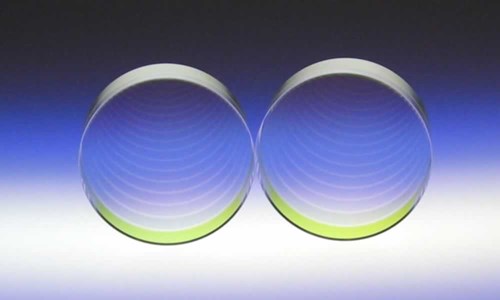 Uncoated etalons are often used inside laser cavities since only low finesse is required filter out unwanted laser wavelengths and uncoated etalons are very damage resistant. But generally solid etalons are coated to increase the finesse of the etalon. Both sides are coated with the same coating. Solid etalons are often made from Fused Silica which is an extremely pure and homogeneous material. Solid etalons are robust, simple devices however they are prone to two forms of temperature instability. Both the index of the material and the physical thickness of the etalon material change with temperature. In certain applications this temperature instability is unacceptable. This temperature dependence can also be a useful method for tuning the transmission peak position of the since it effectively changes the thickness of the etalon. This effect can be explored more fully in our etalon calculator.
Uncoated etalons are often used inside laser cavities since only low finesse is required filter out unwanted laser wavelengths and uncoated etalons are very damage resistant. But generally solid etalons are coated to increase the finesse of the etalon. Both sides are coated with the same coating. Solid etalons are often made from Fused Silica which is an extremely pure and homogeneous material. Solid etalons are robust, simple devices however they are prone to two forms of temperature instability. Both the index of the material and the physical thickness of the etalon material change with temperature. In certain applications this temperature instability is unacceptable. This temperature dependence can also be a useful method for tuning the transmission peak position of the since it effectively changes the thickness of the etalon. This effect can be explored more fully in our etalon calculator.
Air Spaced Etalons
Air spaced etalons reduce the temperature dependence problem by using air as the etalon medium, to greatly reduce the change in refractive index with temperature. 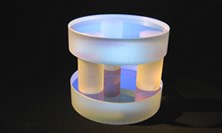 The mirror spacing is now determined by spacers that may still be made from Fused Silica or by even more stable materials such as ULE or Zerodur. Air spaced etalons are significantly more complex since there are now three components involved, two end mirrors and the spacer. The outside surfaces of the end mirrors also need to be wedged and AR coated to avoid reflections from these surfaces causing additional unwanted etalon effects.
The mirror spacing is now determined by spacers that may still be made from Fused Silica or by even more stable materials such as ULE or Zerodur. Air spaced etalons are significantly more complex since there are now three components involved, two end mirrors and the spacer. The outside surfaces of the end mirrors also need to be wedged and AR coated to avoid reflections from these surfaces causing additional unwanted etalon effects.
Tunable Etalons
There are a number of ways to tune etalons including: tilting the entire etalon, moving the mirrors and changing the index of the medium (pressure, temperature, electrostatic). Tilt tuning is a simple tuning technique. As the etalon is tilted the FSR changes with the cosine of the angle.  Piezo electric tuning of an air spaced etalon is usually what is meant by the phrase "tunable etalon". This technique can tune the etalon quickly by changing the size of the air gap. By changing the length of the air gap by half the wavelength of the light, the transmission peak moves one full FSR. So if an etalon is used at 532nm then only 266nm of motion is required to tune the etalon. Small piezo elements can easily move through 10 microns. Small tunable piezo etalons can be made by using a single hollow tube piezo stack, these are a standard item for us and have a clear aperture of about 4mm. Larger piezo tunable etalons are made using 3 piezo elements.
Piezo electric tuning of an air spaced etalon is usually what is meant by the phrase "tunable etalon". This technique can tune the etalon quickly by changing the size of the air gap. By changing the length of the air gap by half the wavelength of the light, the transmission peak moves one full FSR. So if an etalon is used at 532nm then only 266nm of motion is required to tune the etalon. Small piezo elements can easily move through 10 microns. Small tunable piezo etalons can be made by using a single hollow tube piezo stack, these are a standard item for us and have a clear aperture of about 4mm. Larger piezo tunable etalons are made using 3 piezo elements. 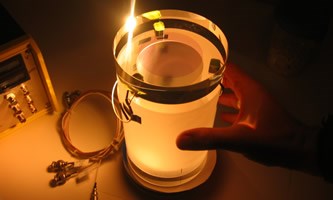 Although these etalons are more complex to control they have the big advantage that the piezo elements can be subtly tuned to eliminate any residual tilt error between the two mirrors and improve the finesse.
Although these etalons are more complex to control they have the big advantage that the piezo elements can be subtly tuned to eliminate any residual tilt error between the two mirrors and improve the finesse.
VIPA Etalons
VIPAs are an interesting variant on the etalon. They are simply an etalon with a built in transmission window so the beam can sneak in past the first reflector and effectively commence the multiple reflections and constructive and destructive interference from inside the etalon. 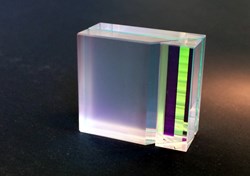 By changing the first reflector to a full 100% high reflector, the beam can only exit in transmission, this effectively creates an etalon with ~100% transmission. But wait, isn't the point of an etalon to change transmission with wavelength. Yes but. Because the light is focussed into the entrance window of the VIPA, the transmission only occurs for specific angles that meet the constructive interference requirement. What happens to the light at the wrong angles? Surprisingly it just morphs into the right angles and transmits. Learn more about VIPAs on our VIPA page or try the VIPA calculator.
By changing the first reflector to a full 100% high reflector, the beam can only exit in transmission, this effectively creates an etalon with ~100% transmission. But wait, isn't the point of an etalon to change transmission with wavelength. Yes but. Because the light is focussed into the entrance window of the VIPA, the transmission only occurs for specific angles that meet the constructive interference requirement. What happens to the light at the wrong angles? Surprisingly it just morphs into the right angles and transmits. Learn more about VIPAs on our VIPA page or try the VIPA calculator.
Questions?
We have tried to cover the basics of etalons but if you have any questions do not hesitate to contact us.
Symbols used in the equations
n = Index of refraction of the etalon medium
λ = central wavelength of interest
R = Reflectivity of each surface of the etalon (assumed to be the same)
d = thickness of the etalon
θ = angle of the beam inside the etalon
c= Speed of Light
F = Finesse
F = Coefficient of finesse
RECENT ETALON PROJECTS
Recent work at LightMachinery
Check out our Catalog and our Calculators!
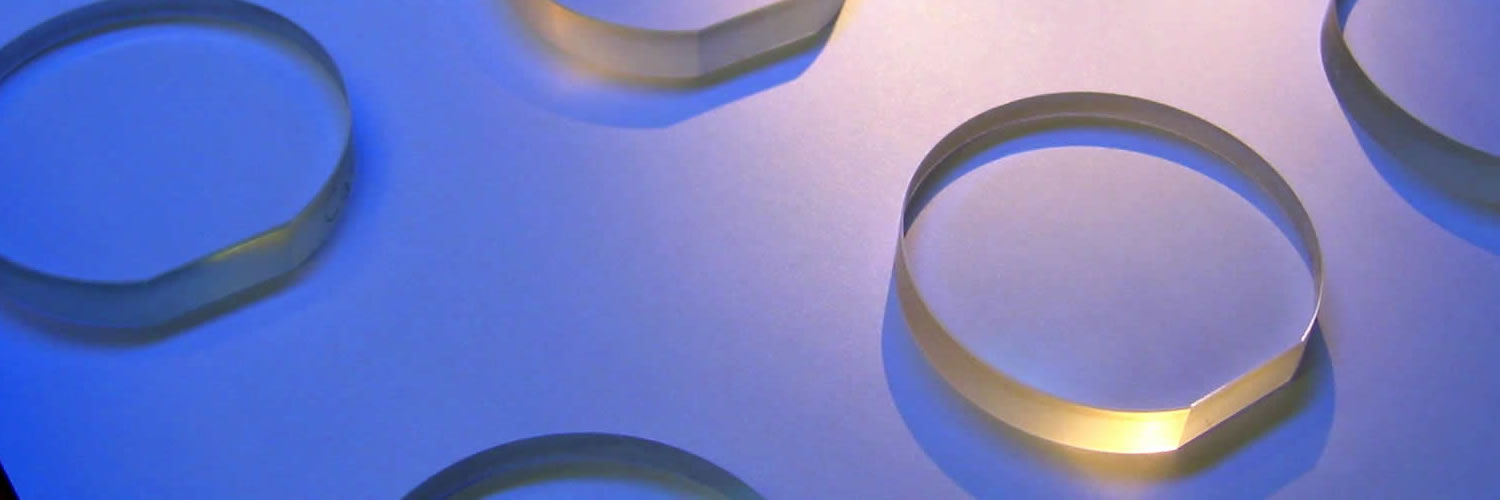
Optics Catalog
Most of the optics we make are custom made but we still have an interesting catalog. Check it out!
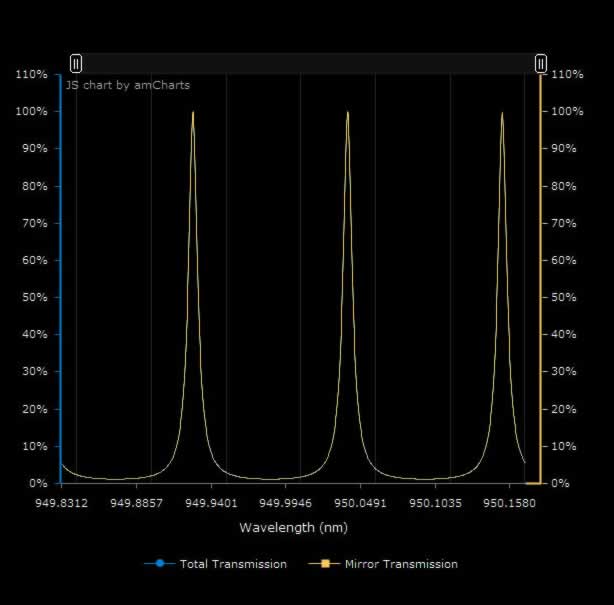
Optical Design Center
Design etalons, lenses, resonators, VIPA's and explore optical material properties.

